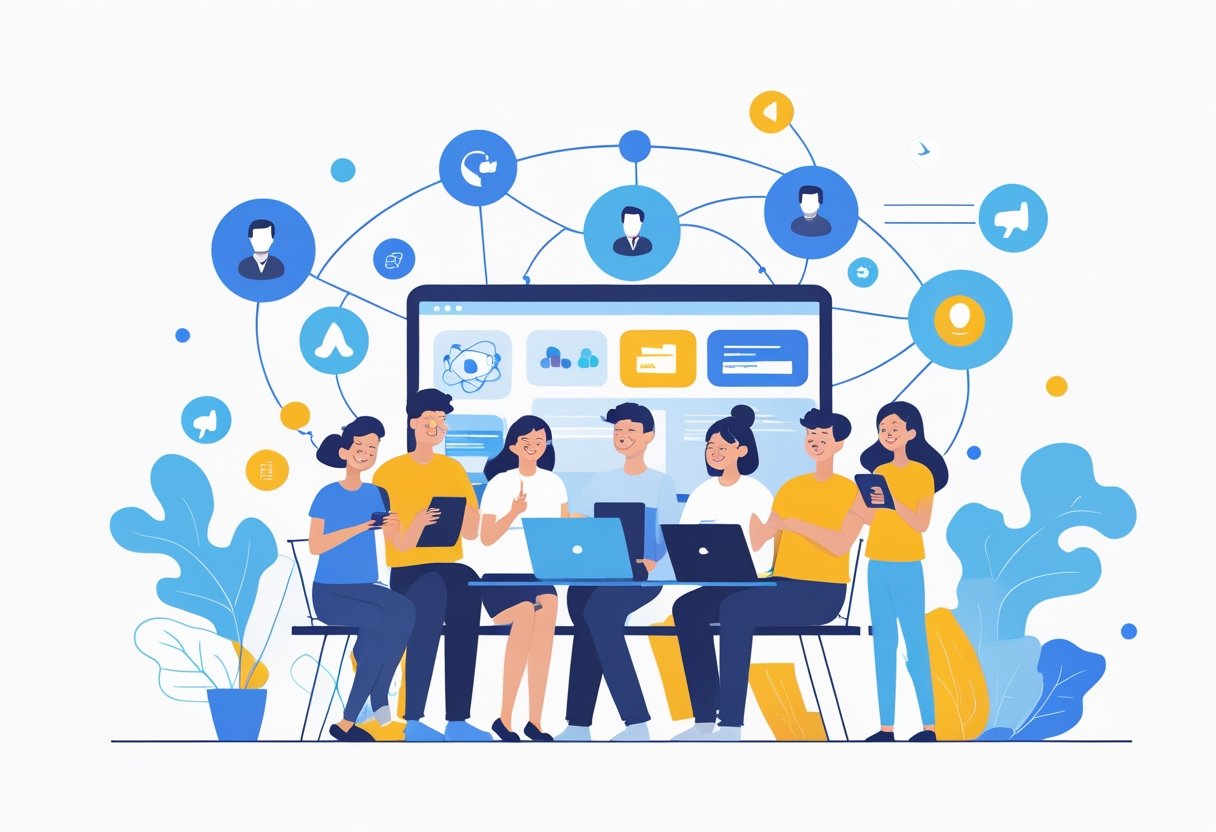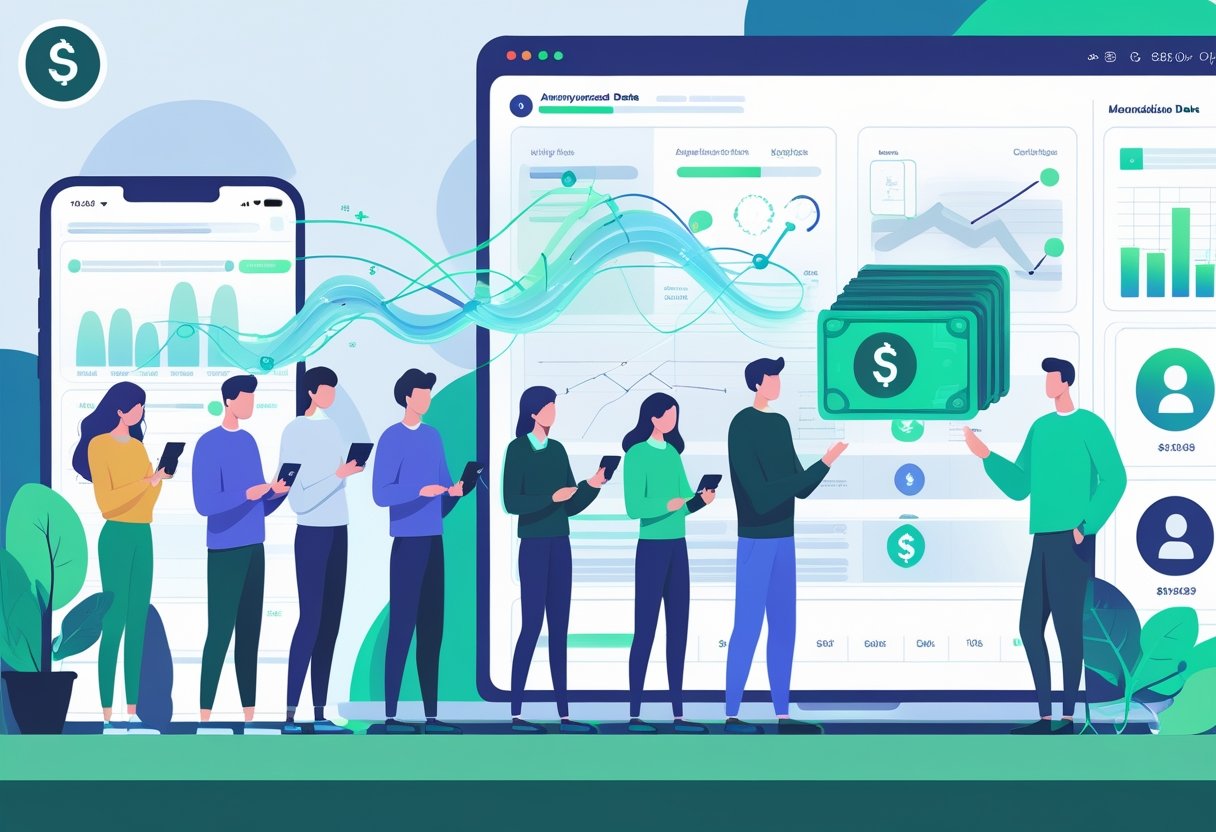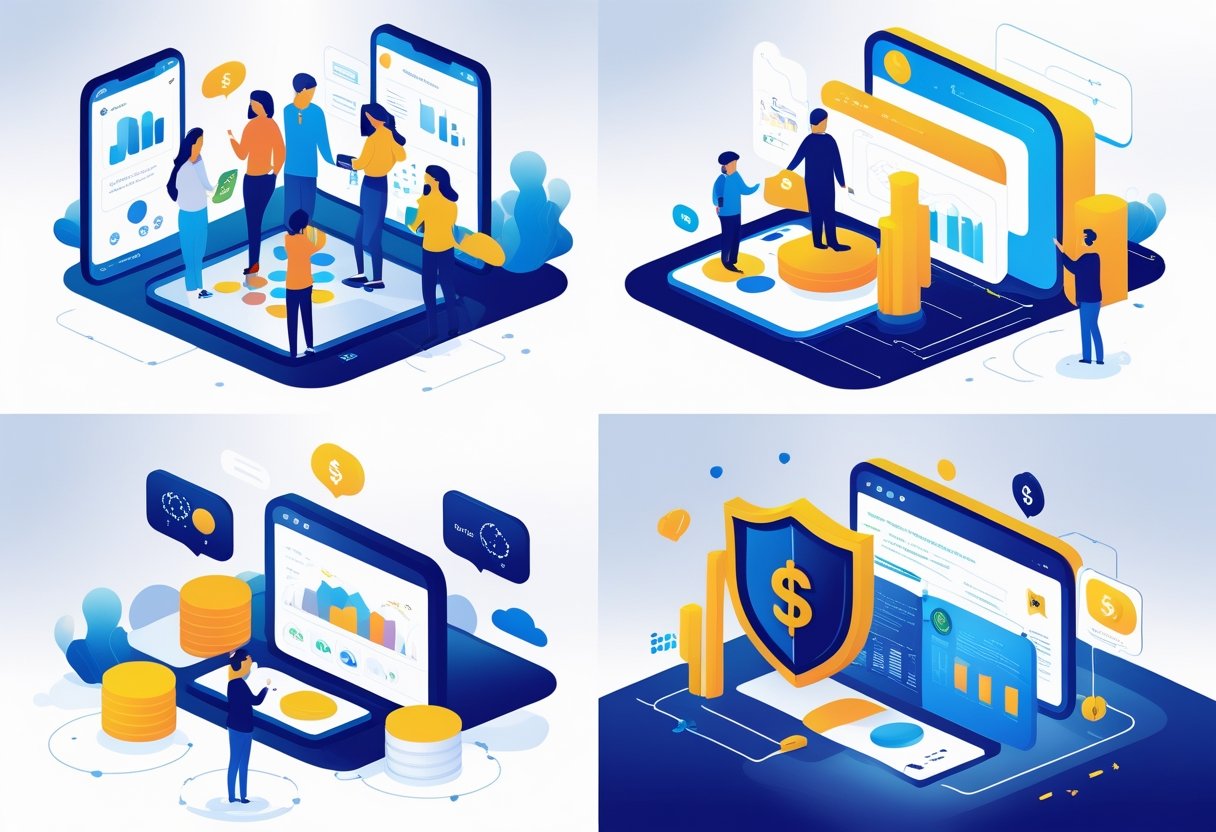Online services and social media platforms have changed the digital world by offering slick features and global connection, all without charging users anything upfront. Every day, billions of people hop onto Facebook, Google, Twitter, and the rest, rarely stopping to ask how these companies actually pay the bills while letting us use their services for free.
These platforms run on business models that turn free user access into real money—mostly through advertising, data collection, network effects, and paid extras. If you dig into how this works, you’ll see why these companies pour so much into keeping services free, and how just by using these platforms, we’re all kind of helping them make money—whether we realize it or not.
1) Advertising Revenue Model: Platforms offer free access to attract users and generate revenue through targeted ads.

Social media companies rely on advertising revenue to keep services free for everyone. They sell ad space to businesses eager to reach the right people.
It’s pretty straightforward: the more users a platform attracts with its free service, the more valuable those eyeballs are to advertisers.
Platforms collect all sorts of user data—age, location, interests, you name it—so advertisers can aim their ads at specific groups instead of just shouting into the void.
Digital ads are different from old-school billboards because they’re personal. You end up seeing ads that actually match your interests and browsing habits (for better or worse).
Ad money rolls in through display ads, video spots, and sponsored posts. Platforms might charge by the impression, the click, or even by specific actions you take.
This whole setup fuels a cycle: free users bring in advertisers, and ad cash pays for the free stuff. Google’s a classic example—they use ad revenue to let everyone search as much as they want, free of charge.
Because joining is free, these platforms can grow fast. And the bigger the crowd, the more tempting it is for advertisers to jump in.
2) Data Monetization: User data is collected and analyzed to sell insights and improve ad targeting.

Free online services make money by turning user data into something valuable. Every tap, search, and scroll leaves a digital trail that companies can use.
There are two main ways this plays out. Some companies sell insights about users to third parties, while others use the info themselves to sharpen their ad game.
Social media sites are especially good at gathering behavioral data. They track everything—what you look at, how you interact, even who you connect with—to build detailed profiles.
With all this data, advertisers can get super precise. They’ll pay more to reach people based on interests, location, or even shopping habits.
Sometimes companies sell these insights (in bulk, not individually) to researchers or businesses that want to understand trends. No names attached, just patterns.
Data collection happens all the time, as you use the service. Your profile, what you like, and your activity history all feed into this machine.
Advanced analytics turn this mountain of data into useful business info. That’s the real goldmine that keeps the free model going.
3) Network Effects: Free access boosts user numbers, increasing the platform’s value for everyone.
Network effects kick in when a platform gets more useful as more people join. Facebook, LinkedIn, TikTok—they all show how this works.
By keeping things free, platforms remove the money hurdle, so anyone can join. That helps them ramp up their user numbers quickly.
Each new person adds something for everyone else—more posts, more friends, more stuff to see and do.
It’s kind of a snowball: as the platform gets more valuable, more people want in.
That’s also why platforms chase growth rather than charging right away. A huge user base is often worth more than a small group of paying customers.
Network effects make these platforms sticky. People stick around because their friends and communities are there. Leaving means losing those connections.
4) Cross-Subsidization: Certain features are free while premium services or virtual goods are sold
Cross-subsidization lets platforms give away the basics for free, while charging for extras. Profits from paid stuff help cover the cost of free features for everyone else.
Social media sites do this a lot. You can post, message, and scroll for free, but they make money from things like premium subscriptions, ad tools, or business upgrades.
Gaming platforms are similar. You play for free, but if you want cool skins or extra features, you pay. That way, lots of people join, but only the most engaged spend money.
The freemium model is a classic example. Basic stuff stays free to get people through the door, then some users upgrade to paid tiers for more perks.
This strategy opens the door to more people, no matter their budget. Free users add value too—by bringing friends or generating data.
It’s a balancing act, though. Companies need to make paid features tempting enough, without making the free version so limited that people leave.
How Online Services Generate Revenue
Mostly, online platforms make money from targeted ads and paid upgrades. These let them keep basic services free, while raking in revenue from user activity and data.
Advertising Models Explained
Targeted advertising is the backbone for most free services. Platforms gather user data—like age, interests, and browsing—to build profiles.
Big players like Facebook and Google sell ad slots to businesses that want to reach just the right crowd. Advertisers pay more for this level of targeting.
Display ads show up as banners, sponsored posts, or videos in your feed. Platforms get paid whenever someone sees or clicks these ads.
Search ads make money when you click on sponsored results. Google’s search engine cashes in on billions of clicks every day.
Platforms use data to give advertisers solid numbers and track what works. That’s why digital ads often cost more than old-school TV or print spots.
Freemium and Subscription Upgrades
Premium subscriptions unlock extra features, but the basics stay free. LinkedIn offers better networking tools, Spotify ditches ads if you pay.
In-app purchases add revenue through virtual goods, more storage, or special features. People choose to upgrade—no pressure.
Professional tiers cater to businesses with things like analytics, team tools, or priority support. These usually cost a lot more than standard subscriptions.
Companies often limit free features to encourage people to upgrade. Stuff like storage caps or frequent ads nudge users toward paid plans.
The Role of User Data in Free Services
Free online services make money by gathering user info and turning it into ad revenue. Companies build detailed profiles from all the data we hand over, which helps them target ads and improve their services.
Data Collection Practices
Platforms collect data in a bunch of ways during normal use. Direct collection happens when you sign up, post, or fill out your profile.
Behavioral tracking watches what you do—clicks, page views, how long you spend on stuff, and what you look at.
Social media companies track things like:
- Personal info (name, age, location)
- Your friends and relationships
- What you like or interact with
- Your device details
- Location from your phone
Google uses things like voice transcription to improve its tech and also collect speech data at the same time. It’s a win-win for them, honestly.
Third-party data sharing takes it further, as companies buy extra info from data brokers to fill out user profiles.
Impact on Personal Privacy
Data collection practices stir up big privacy concerns for users. Companies track and build detailed profiles that expose personal preferences, habits, and even quirks in behavior.
Privacy risks pop up everywhere—think data breaches or someone getting ahold of your info without permission. Not too long ago, surveys showed over half of internet users past 25 worry about their social media accounts getting hacked or misused.
Plenty of people hand over their data without really knowing what’s being collected or why. The lack of transparency around these practices makes it tough for anyone to truly understand what’s at stake or how to protect themselves.
Targeted advertising runs on all that data, serving up ads tailored to your behavior and background. Sure, sometimes the ads feel spot-on, but it’s a little unsettling to realize just how much these companies know about you.
Privacy protections? They’re all over the map depending on the platform or where you live. Regulators keep pushing for stronger laws, but honestly, it still feels like a work in progress.






